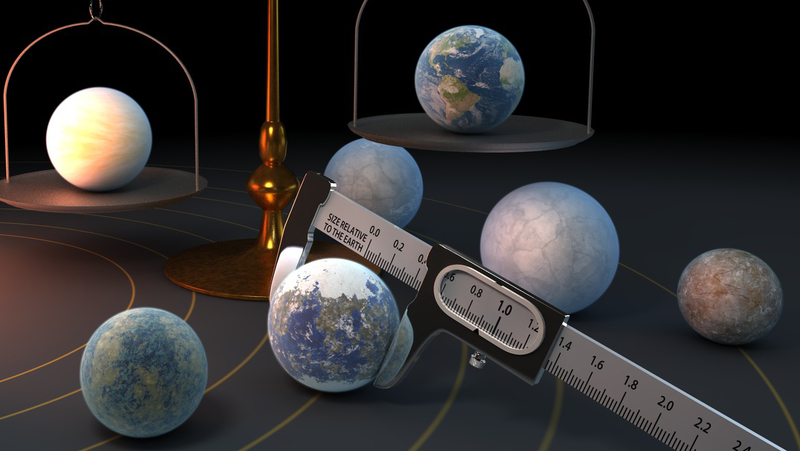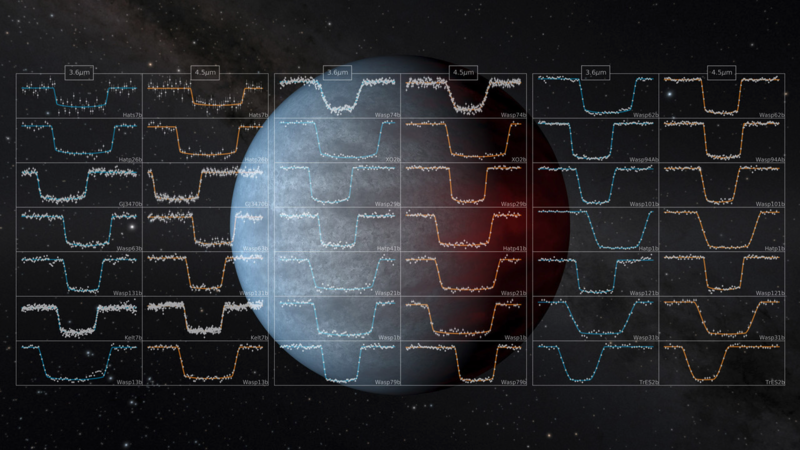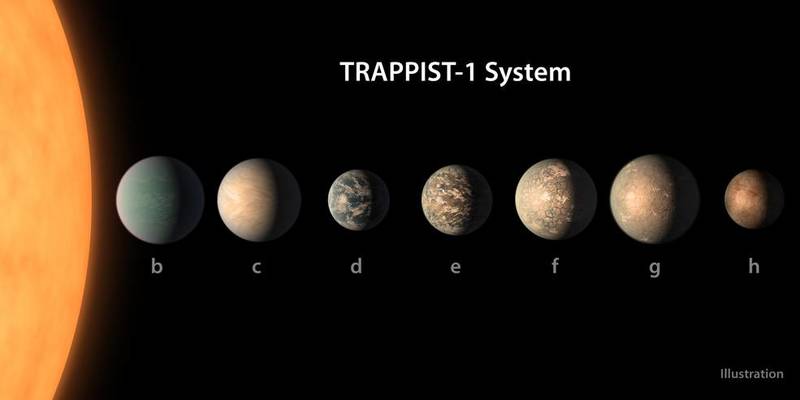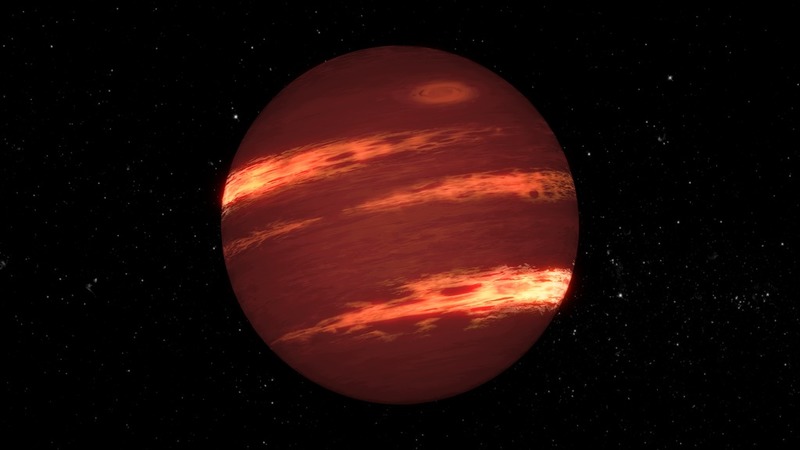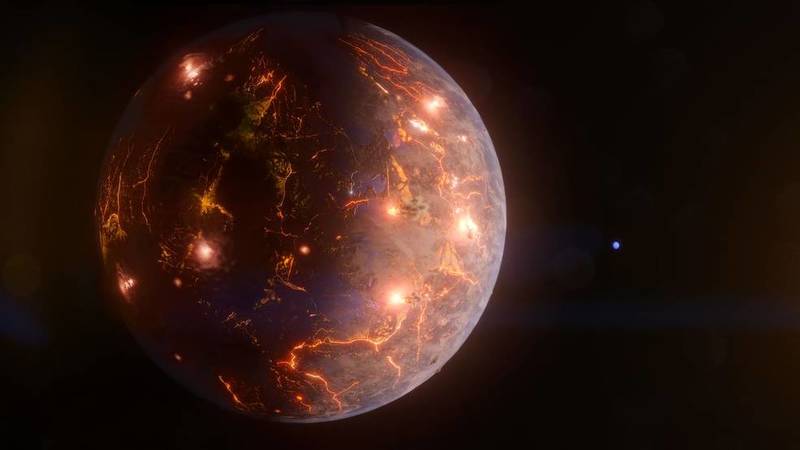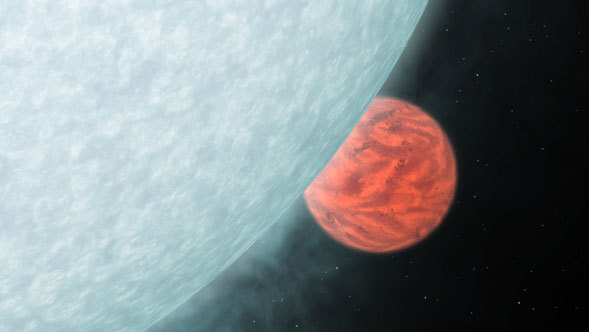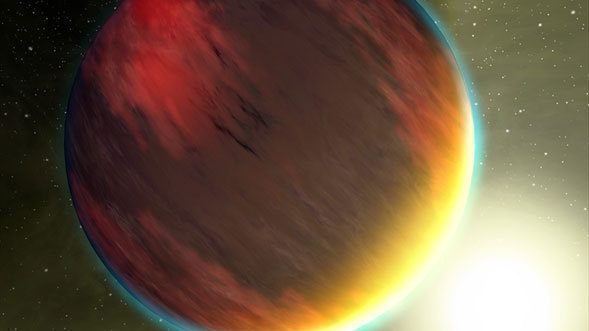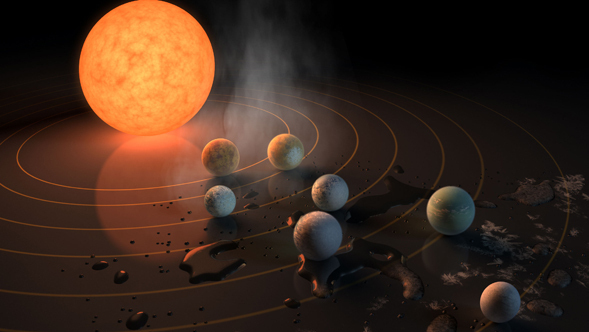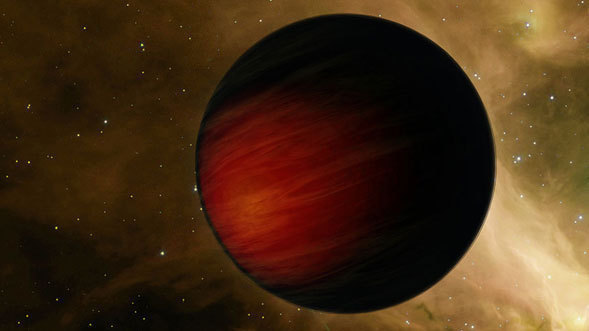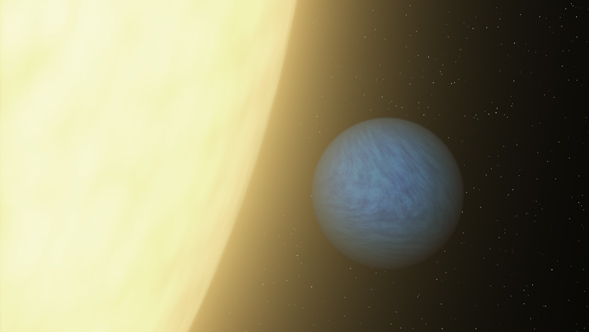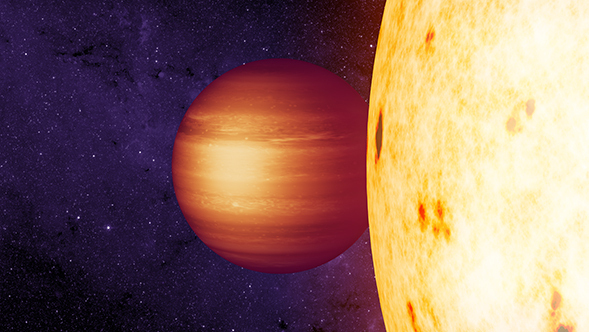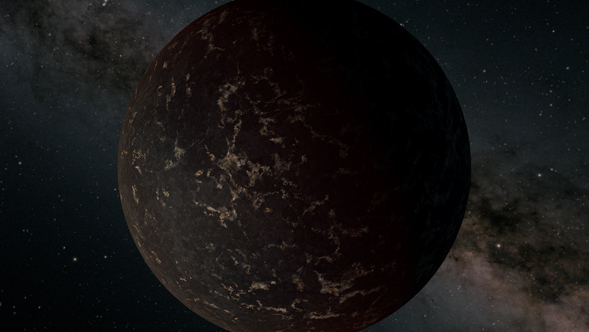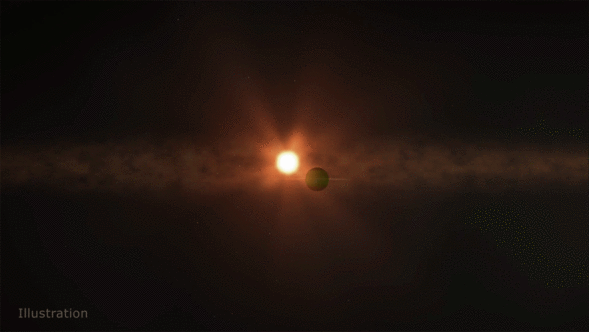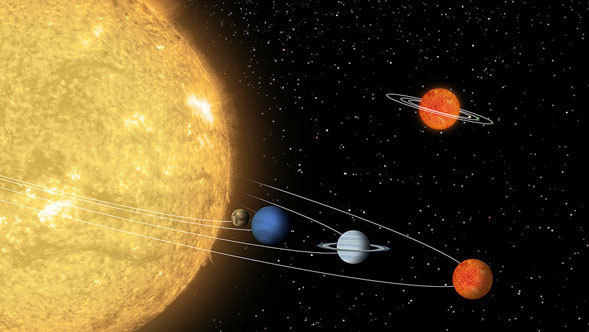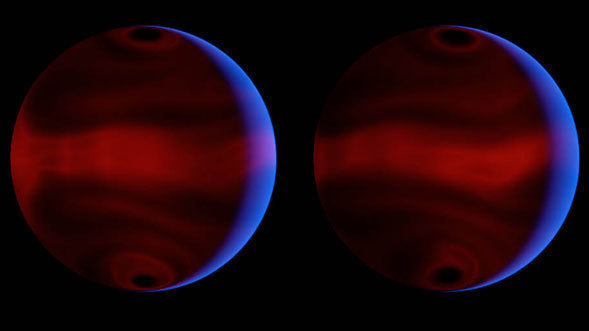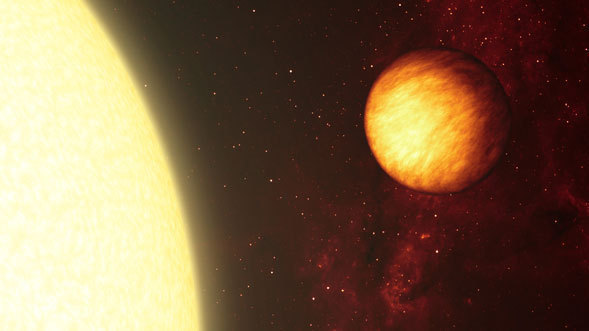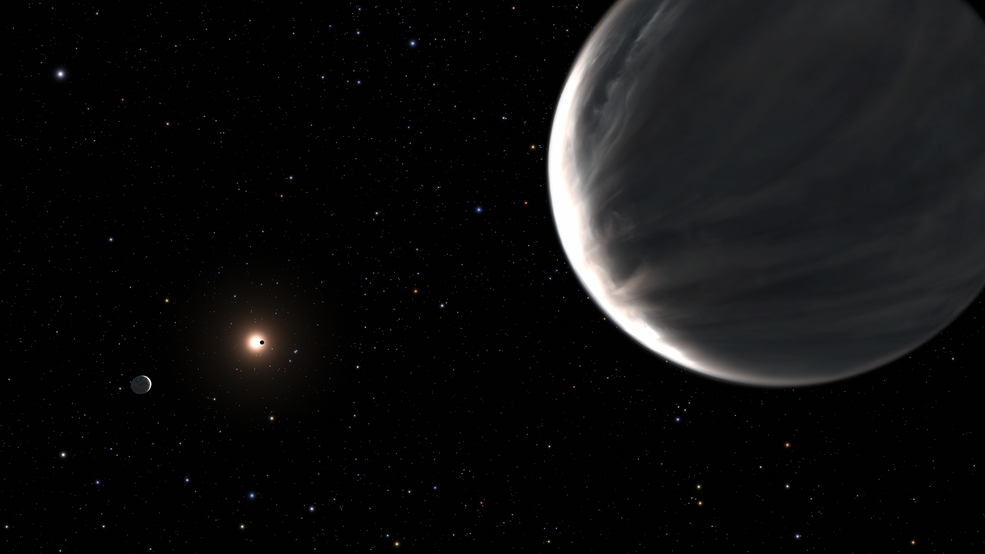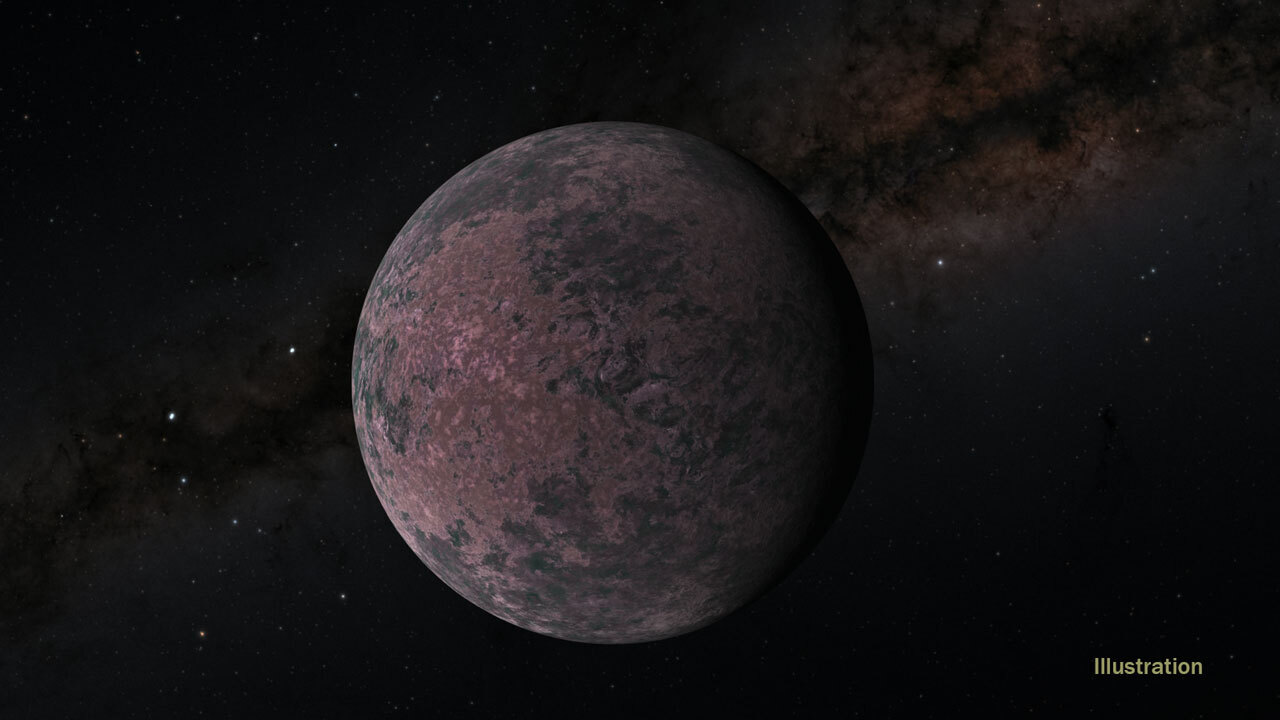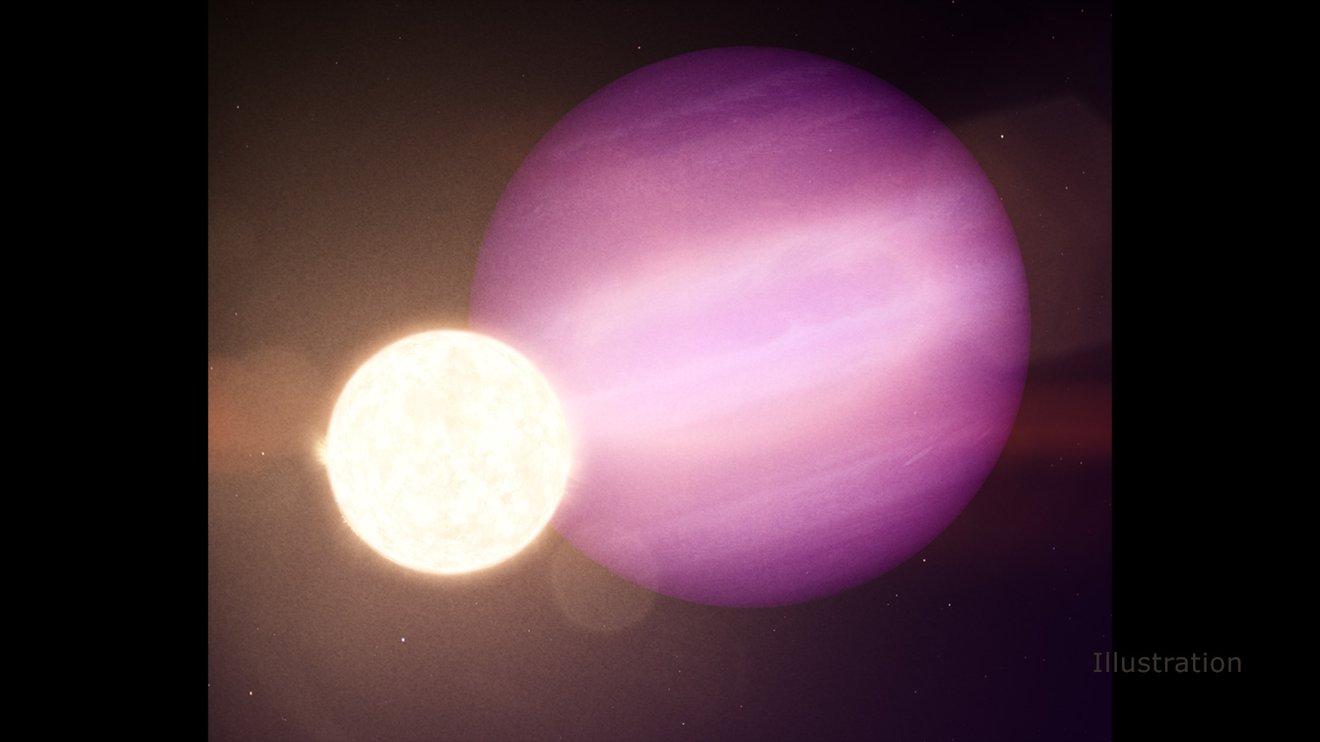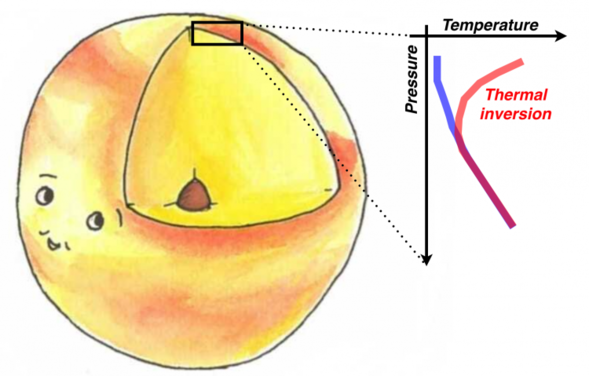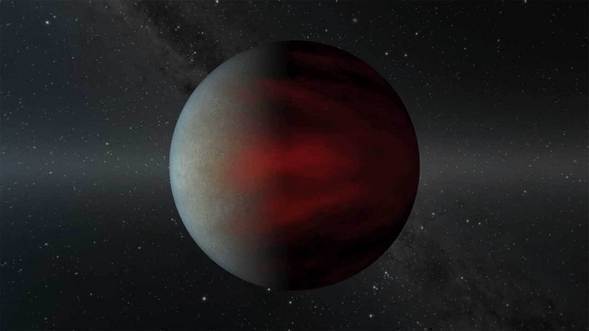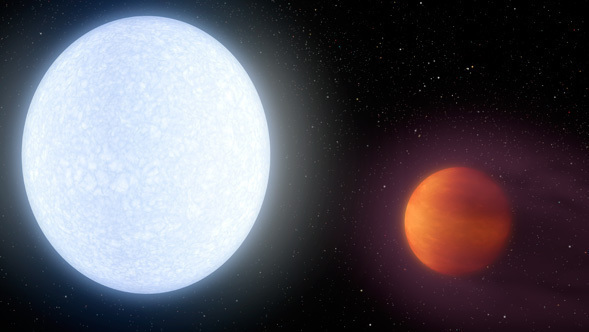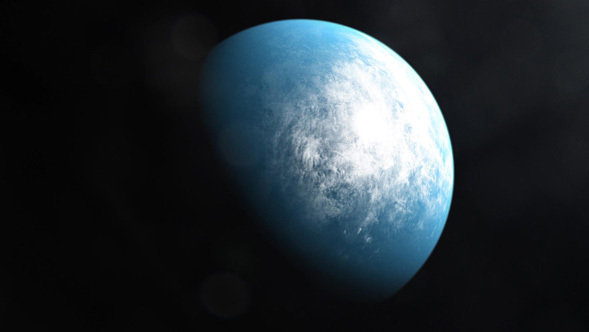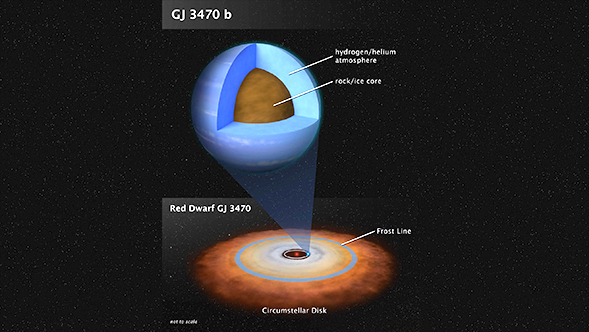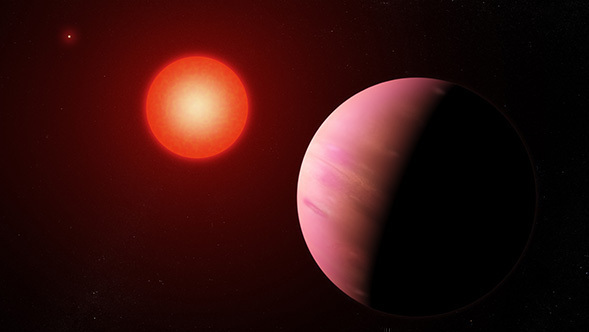Discovering and studying planets that orbit stars other than our sun have become one of the most active areas of astronomy in the past decades. When Spitzer launched in 2003 this was not one of its intended science objectives, but innovations by astronomers and engineers during its mission improved its precision and enabled it to become a critical tool for exoplanet work.
Spitzer was the first to measure how much light was emitted by exoplanets closely orbiting their stars, and has played a key role in discovering and measuring the properties of everything from planets larger than Jupiter to small rocky worlds that may be similar to Earth.
Precise measurements reveal that the exoplanets have remarkably similar densities, which provides clues about their composition.
Among the first, and strangest, planets to be detected around other stars is a variety known as “hot Jupiters” – star-hugging, superheated giants once thought so unlikely that many scientists doubted their existence.
Five years ago, astronomers revealed a spectacular collection of other worlds: the TRAPPIST-1 system.
The infrared observatory may help answer questions about planets outside our solar system, or exoplanets, including how they form and what drives weather in their atmospheres.
Astronomers have discovered an Earth-size exoplanet, or world beyond our solar system, that may be carpeted with volcanoes. Called LP 791-18 d, the planet could undergo volcanic outbursts as often as Jupiter’s moon Io, the most volcanically active body in our solar system.
NASA's Spitzer Space Telescope has for the first time captured the light from two known planets orbiting stars other than our Sun. The findings mark the beginning of a new age of planetary science, in which "extrasolar" planets can be directly measured and compared.
NASA's Spitzer Space Telescope has captured for the first time enough light from planets outside our solar system, known as exoplanets, to identify molecules in their atmospheres. The landmark achievement is a significant step toward being able to detect possible life on rocky exoplanets and comes years before astronomers had anticipated.
NASA's Spitzer Space Telescope has revealed the first known system of seven Earth-size planets around a single star. Three of these planets are firmly located in the habitable zone, the area around the parent star where a rocky planet is most likely to have liquid water.
The double sunset that Luke Skywalker gazed upon in the film Star Wars might not be a fantasy.
Researchers using NASA's Spitzer Space Telescope have learned what the weather is like on two distant, exotic worlds. One team of astronomers used the infrared telescope to map temperature variations over the surface of a giant gas planet, HD 189733b, revealing it likely is whipped by roaring winds. Another team determined that the gas planet HD 149026b is the hottest yet discovered.
NASA's Spitzer Space Telescope has detected light emanating from a "super-Earth" planet beyond our solar system for the first time. While the planet is not habitable, the detection is a historic step toward the eventual search for signs of life on other planets.
NASA's Spitzer Space Telescope has teamed up with a telescope on the ground to find a remote gas planet about 13,000 light-years away, making it one of the most distant planets known.
The hottest point on a gaseous planet near a distant star isn’t where astrophysicists expected it to be – a discovery that challenges scientists’ understanding of the many planets of this type found in solar systems outside our own.
A new study using data from NASA's Spitzer Space Telescope provides a rare glimpse of conditions on the surface of a rocky planet orbiting a star beyond the Sun.
The newly discovered planet is orbiting a star still encircled by the disk of material from which both objects formed, giving scientists a glimpse at early planet evolution.
Planets are everywhere these days. They have been spotted around more than 150 stars, and evidence is growing that they also circle "failed," or miniature, stars called brown dwarfs. Now, astronomers using NASA's Spitzer Space Telescope say they have found what may be planets-in-the-making in the strangest of places -- around a brown dwarf that itself is the size of a planet.
NASA's Spitzer Space Telescope has observed a planet that heats up to red-hot temperatures in a matter of hours before quickly cooling back down.
NASA's Spitzer Space Telescope has made the first measurements of the day and night temperatures of a planet outside our solar system. The infrared observatory revealed that the Jupiter-like gas giant planet circling very close to its sun is always as hot as fire on one side, and potentially as cold as ice on the other.
A team led by researchers at the University of Montreal has found evidence that two exoplanets orbiting a red dwarf star are "water worlds," where water makes up a large fraction of the entire planet.
GJ 1252 b, a rocky, terrestrial "super-Earth" discovered in 2020, has been given a closer look and astronomers have found that the exoplanet could have a very minimal atmosphere or possibly no atmosphere at all.
The violent events leading up to the death of a star would likely drive away any planets. The newly discovered Jupiter-size object may have arrived long after the star died.
The thermal structure of hot gas giant exoplanet atmospheres is likely to be inverted for the hottest planets, a class of planets known as ultra-hot Jupiters.
Jupiter-size planets orbiting close to their stars have upended ideas about how giant planets form. Finding young members of this planet class could help answer key questions.
In the scorching atmosphere of exoplanet KELT-9b, even molecules are torn to shreds.
NASA's Transiting Exoplanet Survey Satellite has discovered its first Earth-size planet in its star's habitable zone, the range of distances where conditions may be just right to allow the presence of liquid water on the surface. Scientists confirmed the find, called TOI 700 d, using NASA's Spitzer Space Telescope and have modeled the planet's potential environments to help inform future observations.
Two NASA space telescopes have teamed up to identify, for the first time, the detailed chemical "fingerprint" of a planet between the sizes of Earth and Neptune. No planets like this can be found in our own solar system, but they are common around other stars.
Using data from NASA's Kepler space telescope, citizen scientists have discovered a planet roughly twice the size of Earth located within its star's habitable zone, the range of orbital distances where liquid water may exist on the planet's surface. The new world, known as K2-288Bb, could be rocky or could be a gas-rich planet similar to Neptune. Its size is rare among exoplanets - planets beyond our solar system.
